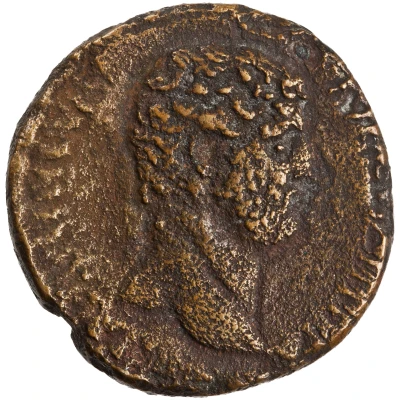Sestertius - Hadrian ADVENTVI AVG MACEDONIAE S C; Macedonia
| Orichalcum | 25 g | 32.5 mm |
| Issuer | Rome › Roman Empire (27 BC - 395 AD) |
|---|---|
| Emperor | Hadrian (Publius Aelius Hadrianus) (117-138) |
| Type | Standard circulation coin |
| Years | 130-133 |
| Value | 1 Sestertius = ¼ Denarius |
| Currency | Denarius, Reform of Augustus (27 BC – AD 215) |
| Composition | Orichalcum |
| Weight | 25 g |
| Diameter | 32.5 mm |
| Shape | Round (irregular) |
| Technique | Hammered |
| Demonetized | Yes |
| Updated | 2024-10-06 |
| Numista | N#256259 |
|---|---|
| Rarity index | 100% |
Reverse
Hadrian standing right, raising hand and holding scroll; facing him, Macedonia standing left, holding patera and whip; between them, altar, usually with bull at the base.
Script: Latin
Lettering:
ADVENTVI AVG MACEDONIAE
S C
Translation:
Adventui Augusti Macedoniae. Senatus Consultum.
Adventus (Roman welcoming ceremony) of the emperor (Augustus) to Macedonia. Decree of the senate.
Comment
Source: Online Coins of the Roman Empire (OCRE)Interesting fact
The Sestertius coin , which features Hadrian and the inscription "ADVENTVI AVG MACEDONIAE S C," is notable for its use of the metal Orichalcum. Orichalcum was a type of brass alloy that was highly valued in ancient Rome for its durability and resistance to corrosion. It was often used in the production of coins, weapons, and other objects that required strength and durability. The use of Orichalcum in this coin reflects the high level of craftsmanship and attention to detail that was typical of Roman coinage during this period.

